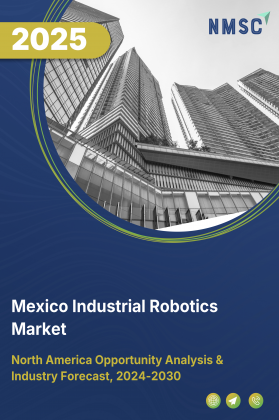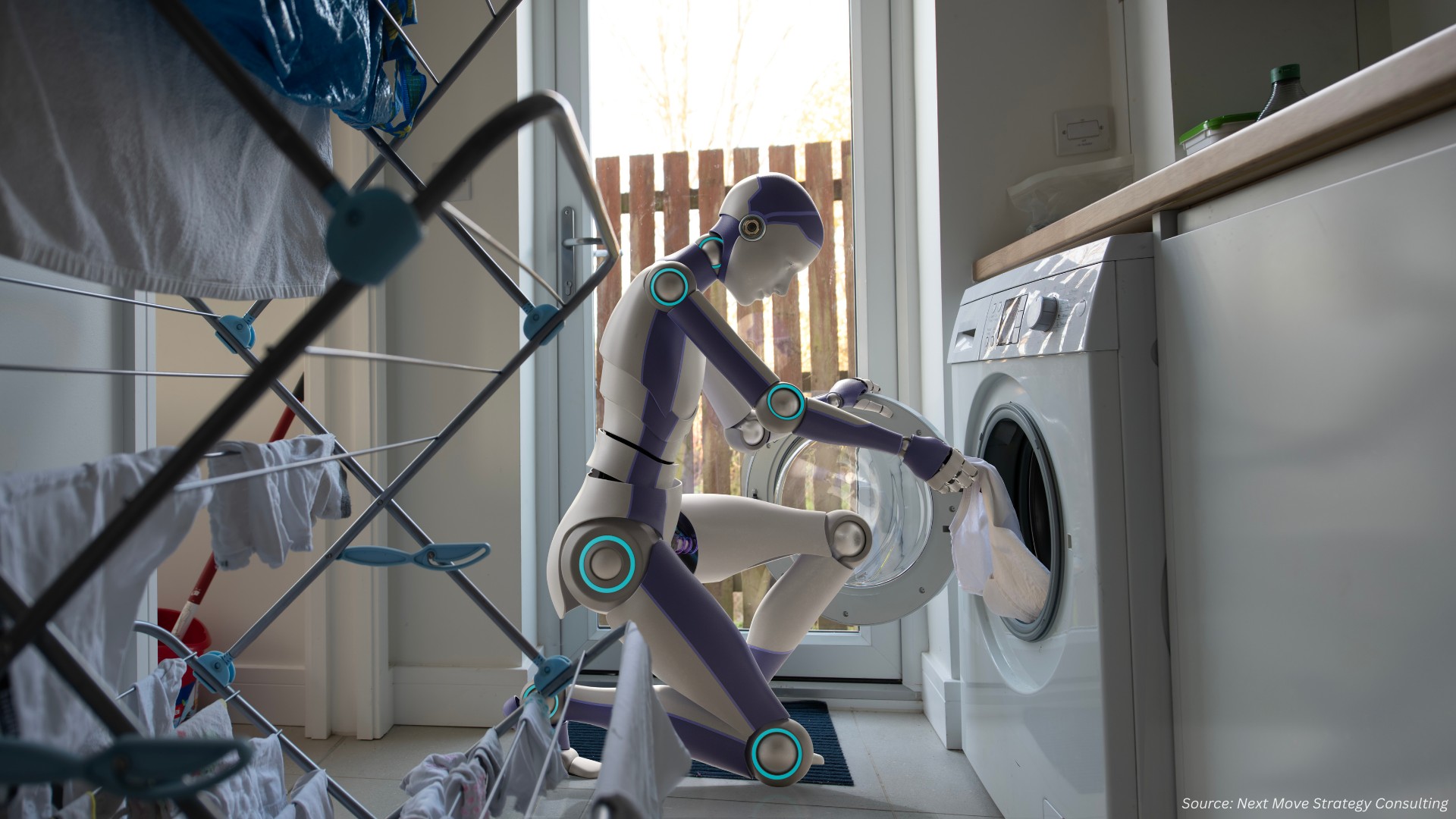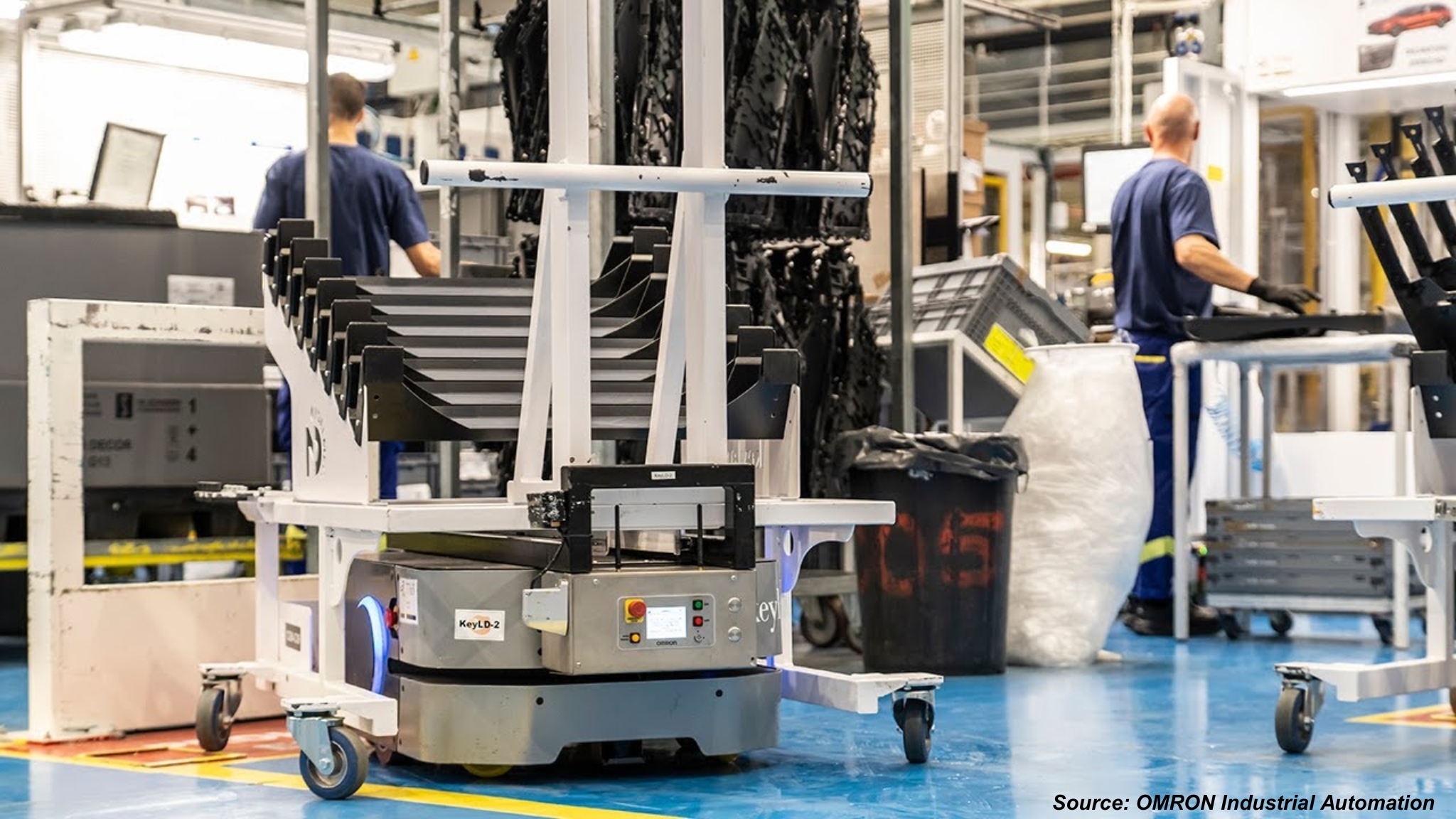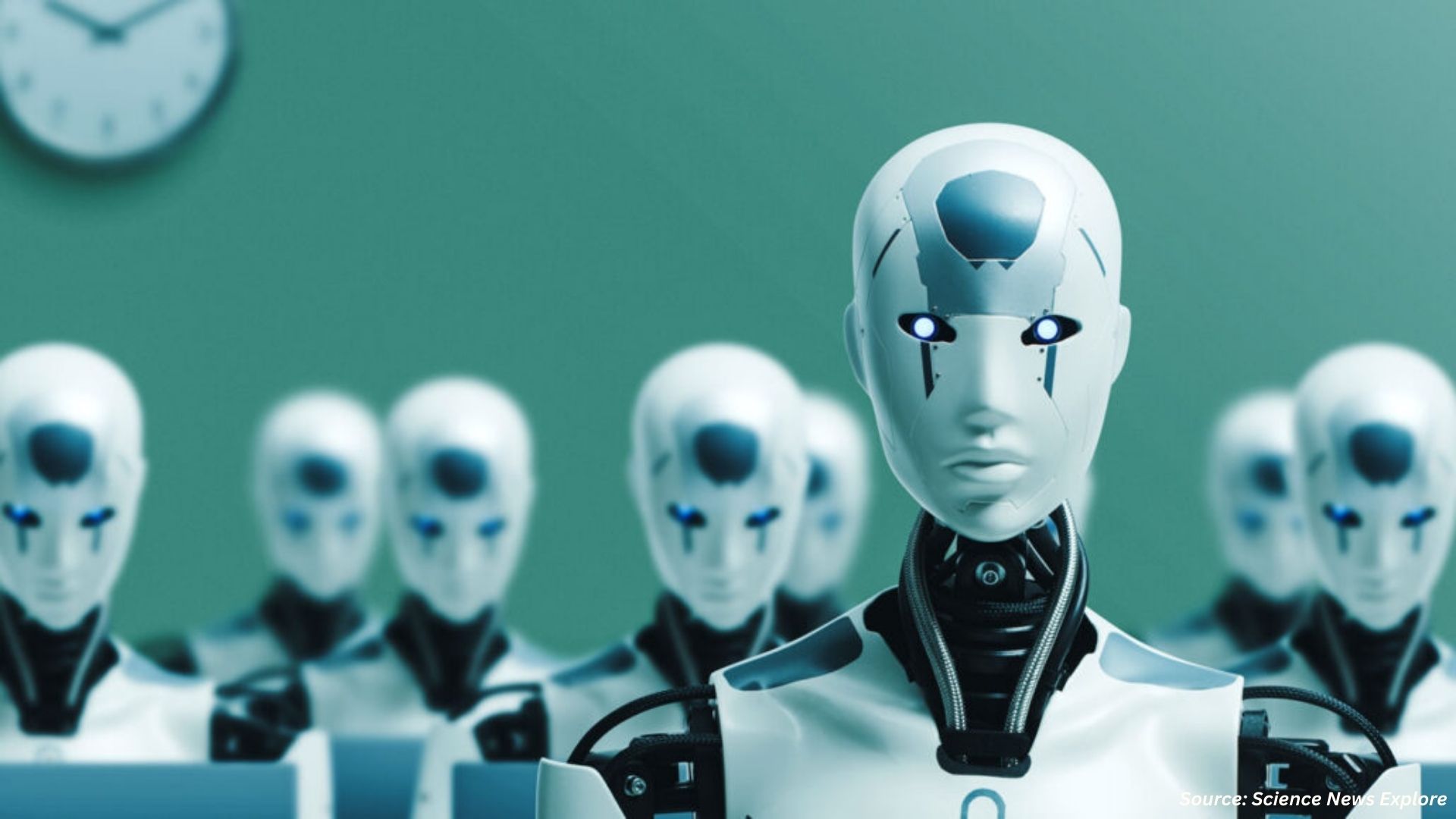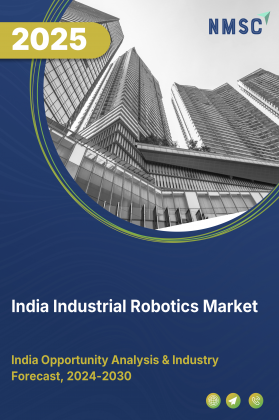
India Industrial Robotics Market by Type (Articulated Robots, SCARA Robots, and Others), by Offering Hardware, Software, and Services), by Payload Capacity (≤ 100 KG, 101-200 KG, 201-500 KG and Others), by Mobility (Stationary, and Mobile Robots), by Mounting Type (Floor mounted, Wall-mounted, and Others), by Application (Material Handling, Assembling & Disassembling, and Others), by Industry Vertical (Automotive, and Others) – Opportunity Analysis and Industry Forecast, 2025–2030
Industry: Semiconductor & Electronics | Publish Date: 24-Nov-2025 | No of Pages: 237 | No. of Tables: 192 | No. of Figures: 137 | Format: PDF | Report Code : SE3710
Industry Outlook
The India Industrial Robotics Market size was valued at USD 577.2 million in 2024 and is expected to reach USD 711.1 million by 2025. Looking ahead, the industry is projected to expand significantly, reaching USD 1547.6 million by 2030, registering a CAGR of 16.8% from 2025 to 2030. In terms of volume, the market recorded 8 thousand units in 2024, with forecasts indicating growth to 10 thousand units by 2025 and further to 20 thousand units by 2030, reflecting a CAGR of 16.3% over the same period.
The India industrial robotics market is witnessing strong growth driven by rising manufacturing investments, increasing automation demand, and the growing adoption of IoT-enabled technologies. Expanding sectors such as automotive, electronics, pharmaceuticals, and food processing are increasingly integrating industrial robots to enhance productivity, ensure consistent quality, and reduce operational costs. Additionally, labor shortages and rising wage costs are prompting manufacturers to automate repetitive and high-precision tasks, improving efficiency and competitiveness. However, high implementation costs and a shortage of skilled technicians continue to challenge widespread adoption, particularly among small and medium-sized enterprises. Despite these constraints, the integration of IoT and AI is transforming India’s manufacturing landscape, enabling data-driven operations, predictive maintenance, and smart production processes that are accelerating the country’s transition toward advanced and globally competitive manufacturing.
Rising Manufacturing Investment is Boosting Industrial Robotics Adoption in India
The industrial robotics market trend in India is being increasingly driven by growing investments in the manufacturing sector, particularly in automotive, electronics, and pharmaceuticals. As companies expand production capacities and modernize facilities, there is a rising demand for automation to enhance efficiency, ensure consistent quality, and reduce labor costs. The adoption of advanced robotic solutions, including collaborative robots and AI-integrated systems, is helping manufacturers optimize workflows, improve precision, and increase overall productivity. This surge in manufacturing investment, combined with India’s focus on improving global competitiveness, is accelerating the deployment of industrial robots across key industrial segments.
Labor Shortages and Rising Wage Costs are Driving Robotics Adoption in India
A significant driver of the India industrial robotics market growth is the increasing labor shortages and rising wage costs in the manufacturing sector. Companies are turning to industrial robots to maintain productivity, reduce dependency on manual labor, and ensure consistent quality in high-volume production environments. Robotics adoption helps automate repetitive and physically demanding tasks, allowing manufacturers to optimize workforce allocation and improve operational efficiency. This trend is particularly evident in sectors such as automotive, electronics, pharmaceuticals, and food processing, where automation is helping Indian manufacturers remain competitive both domestically and in the global market.
High Costs are Limiting Industrial Robots Adoption in India
The high initial investment required for industrial robots remains a significant barrier to widespread adoption in India. Small and medium-sized enterprises (SMEs), which constitute a large portion of the manufacturing sector, often struggle to justify the capital expenditure on advanced robotics, despite the potential productivity gains. In addition to purchase costs, expenses related to installation, maintenance, and skilled workforce training further constrain adoption. As a result, many manufacturers continue to rely on manual labor or semi-automated systems, slowing the pace of industrial automation. Reducing costs through government incentives, financing solutions, and the introduction of cost-effective robotic systems could help accelerate adoption across the country.
IoT Integration Boosting Productivity Creates Future Opportunity
The adoption of Internet of Things (IoT) technology is emerging as a key driver for the India industrial robotics market demand. IoT-enabled industrial robots enable real-time monitoring, predictive maintenance, and intelligent process control, allowing manufacturers to optimize production workflows, track equipment performance, and reduce downtime. This connected manufacturing ecosystem supports data-driven decision-making, where insights from sensors and analytics enhance operational efficiency and productivity. By leveraging IoT-enabled robotics, Indian manufacturers are improving efficiency, lowering operational costs, and accelerating the adoption of advanced automation solutions across sectors such as automotive, electronics, pharmaceuticals, and food processing.
Competitive Landscape
The India industrial robotics industry is highly competitive, driven by a mix of global and domestic players that are shaping innovation and automation adoption. Leading companies in the market include ABB Ltd., Fanuc Corporation, Yaskawa Electric Corporation, Mitsubishi Electric Corporation, KUKA AG, Kawasaki Heavy Industries, Siemens AG, Denso Wave Inc., Panasonic Corporation, Shibaura Machine Co., Ltd., Omron Corporation, Seiko Epson Corporation, Staubli International AG, Universal Robots, and Comau S.p.A. These key players are developing advanced robotic solutions integrating AI, IoT, collaborative robots (cobots), and autonomous mobile robots (AMRs) to meet the evolving needs of India’s manufacturing sector. Their technologies are accelerating the adoption of automation across industries such as automotive, electronics, machinery, and pharmaceuticals, enhancing production efficiency, operational flexibility, and the competitiveness of Indian manufacturers in the global industrial landscape.
India Industrial Robotics Market Key Segments
By Type
-
Articulated Robots
-
SCARA Robots
-
Cylindrical Robots
-
Cartesian/Linear Robots
-
Parallel Robots
-
Collaborative Robots
-
Autonomous Mobile Robots (AMRs)
-
Automated Guided Vehicles (AGVs)
-
Other Robots
By Offering
-
Hardware
-
Software
-
Robot Control Software
-
Vision & Perception Software
-
Other Software
-
-
Services
By Payload Capacity
-
≤ 100 KG
-
101-200 KG
-
201-500 KG
-
501-1000 KG
-
1001-2000 KG
-
2001-5000KG
-
More than 5000 KG
By Mobility
-
Stationary Robots
-
Mobile Robots
By Mounting Type
-
Floor-mounted
-
Wall-mounted
-
Ceiling-mounted
-
Rail-mounted
By Application
-
Material Handling
-
Assembling & Disassembling
-
Processing
-
Cleanroom
-
Dispensing
-
Welding and Soldering
-
Pick and Place
-
Others
By Industry Vertical
-
Automotive
-
Semiconductor & Electronics
-
Plastic and Chemical Products
-
Metal and Machinery
-
Logistics
-
Food & Beverages
-
Healthcare & Pharmaceutical
-
Others
Key Players
-
ABB Ltd.
-
Fanuc Corporation
-
Yaskawa Electric Corporation
-
Mitsubishi Electric Corporation
-
KUKA AG
-
Kawasaki Heavy Industries
-
Seimens AG
-
Denso Wave Inc.
-
Panasonic Corporation
-
Shibaura Machine CO., LTD
-
Omron Corporation
-
Seiko Epson Corporation
-
Staubli International AG
-
Universal Robots
-
Comau S.p.A.
Report Scope and Segmentation
|
Parameters |
Details |
|
Market Size in 2025 |
USD 711.1 Million |
|
Revenue Forecast in 2030 |
USD 1547.6 Million |
|
Growth Rate |
CAGR of 16.8% from 2025 to 2030 |
|
Market Volume in 2025 |
10 thousand units |
|
Volume Forecast in 2030 |
20 thousand units |
|
Growth Rate |
CAGR of 16.3% from 2025 to 2030 |
|
Analysis Period |
2025–2030 |
|
Base Year Considered |
2025 |
|
Forecast Period |
2025–2030 |
|
Market Size Estimation |
Million (USD) |
|
Growth Factors |
|
|
Companies Profiled |
15 |
|
Market Share |
Available for 10 companies |
|
Customization Scope |
Free customization (equivalent up to 80 working hours of analysts) after purchase. Addition or alteration to country, regional, and segment scope. |
|
Pricing and Purchase Options |
Avail customized purchase options to meet your exact research needs. |

















 Speak to Our Analyst
Speak to Our Analyst





